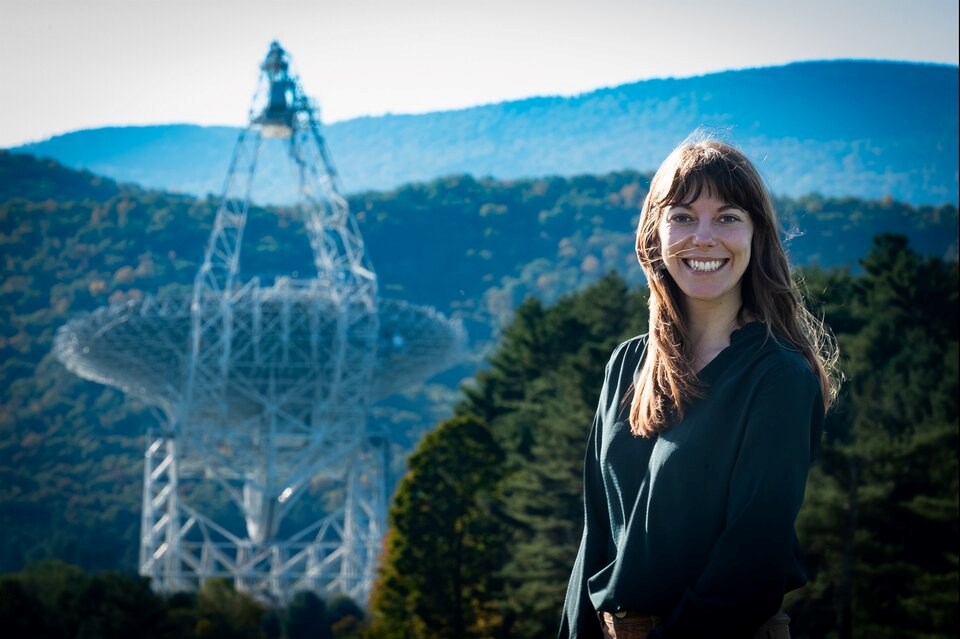Scientists have identified a carbon molecule more than 430 light-years away that could act as a interstellar repository for the building blocks of life.
The discovery of 1-cyanopyrene, a derivative of the four-ring pyrene molecule, was made in a dense interstellar body known as the Taurus cloud, or TMC-1.
Published in the journal Science Thursday, the study leaned on the world’s largest movable radiotelescope, and brought together experts in chemistry, physics and astronomy from across the United States and Canada — from Boston to Vancouver.
Since the 1980s, astronomers had suspected polycyclic aromatic hydrocarbons, or PAHs, were floating around interstellar clouds and at the margins of stars.
The molecules are toxic to humans, and often form through the burning of organic matter like fossil fuels or wood. Look for the molecules closer to home and you’ll find them in the soot in ringing a fireplace or char on the outside of steak cooked on a barbecue, said Ilsa Cooke, an assistant professor at the University of British Columbia’s department of chemistry and a co-author on the study.
“On Earth, they actually have a pretty bad reputation,” Cooke said. “If you kind of stick your head out of the back of a car, you would inhale some.”
While toxic in a human body, PAHs also have similar chemical backbones and structures to the molecules that make up life, said Cooke. They could account for as a much as a quarter of all carbon in the universe. And until recently, identifying them has been one of the great cosmic mysteries plaguing our understanding of what makes up space.
“If you point a telescope at the sky, you see these really bright celestial features, kind of like fingerprints of molecules,” said Cooke. “For a long time, astronomers could see these throughout our galaxy and in other galaxies, but they didn't know the identity of them.”
To unravel the identity of what were long seen as unidentified bands of light, the team of researchers had to match their chemical fingerprint on Earth.
They turned to a synthetic chemist at the Massachusetts Institute of Technology, who manufactured the molecule and its 16 carbon atoms.
Lead researcher Gabi Wenzel, a chemist at MIT, then pointed a laser at the 1-cyanopyrene molecule, turning into a gas. Next, she analyzed the light signature it emitted as it spun its signature microscopic dance.
You might have heard people say “we're all made of stardust,” said Wenzel.
“We’re trying to figure out what is this dust?”
The international team needed a satellite dish big enough to detect faint radio signals hundreds of light-years away. That took them to West Virginia, where the 100-metre wide Green Bank radiotelescope — the largest steerable radio telescope in the world — which stands tucked into a mountainous forest where it’s shielded from radio interference.
Pointing the radiotelescope at the Taurus cloud, considered a star nursery that could one day form its own solar system, was like peering back to the beginning our planet’s own origins, said Brett McGuire, the study’s senior author and chemist at the Massachusetts Institute of Technology.
The team compared the more than 1,500 hours of data from the interstellar cloud with the light fingerprint they measured in the lab. They matched.
McGuire said about 0.1 per cent of the cold interstellar cloud — which sits at about minus 263 degrees Celsius, just above absolute zero — is made up of the large hydrocarbon.
In the past, scientists thought small PAHs would be destroyed by shock waves and cosmic UV rays faster than they can be created. Pyrene, on the other hand, has four particularly stable aromatic rings that make them difficult to destroy.
Its abundance, say the scientists, suggests such clouds supply young planetary systems with carbon.
“We now have this picture of what the chemistry looks like in our solar system, and we have a picture of what the chemistry might have looked like before our solar system was even formed,” said McGuire.
Another strong indication the hydrocarbons could have formed a source for carbon-based life on Earth comes from a mission in our own solar system.
In 2018, a Japanese team managed to land a probe on the asteroid Ryugu, which was born as our solar system’s sun and planets were forming. When the samples came back to Earth, they found pyrene, suggesting the hydrocarbons had a role in the early formation of our sun and planets.
“What we think is that molecule is formed super early, right at the birth of the solar system, and then it survives its journey all the way up into forming the asteroid,” said Cooke.
“It's like a fossil record of carbon in our solar system.”



